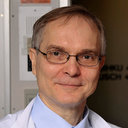Dioxin cancer risk--example of hormesis?
Клучни зборови
Апстракт
A recent case-control study implied an inverse correlation between the measured body burden of dioxins (polychlorinated dibenzo-p-dioxins and polychlorinated dibenzofurans, PCDD/F) and the risk of soft tissue sarcoma in normal population exposed to dioxins mainly via food. The surprising result could not be explained by biases or confounding. There is no a priori confounding by occupational chemicals in a random sample from general population, but exposures to other lipid soluble chemicals with similar sources might be expected to associate with that of dioxins. One such group is polychlorinated biphenyls (PCB). Therefore three most relevant dioxin-like PCB compounds PCB 77, PCB 126, and PCB 169 were now analyzed from the same patients. Cases were 110 soft-tissue sarcoma patients undergoing surgery for their disease, and referents were 227 patients operated for appendicitis. Dioxin and PCB concentrations were analyzed from subcutaneous fat samples by high-resolution gas chromatography-mass spectrometry and TCDD equivalent concentrations (WHO-TEq) were calculated by using toxicity equivalency factors of WHO. The highest risk of sarcoma was found in the septile with the lowest body burden of sum WHO-TEq, and the differences of septiles 2 and 6 from septile 1 were statistically significant. If soft sarcoma risk is true at high occupational levels of dioxins, the provocative result suggests that a possibility of a J-shaped dose-response curve should be taken into consideration and studied further. This is also supported by the similar J-shaped dose responses in animal studies.


